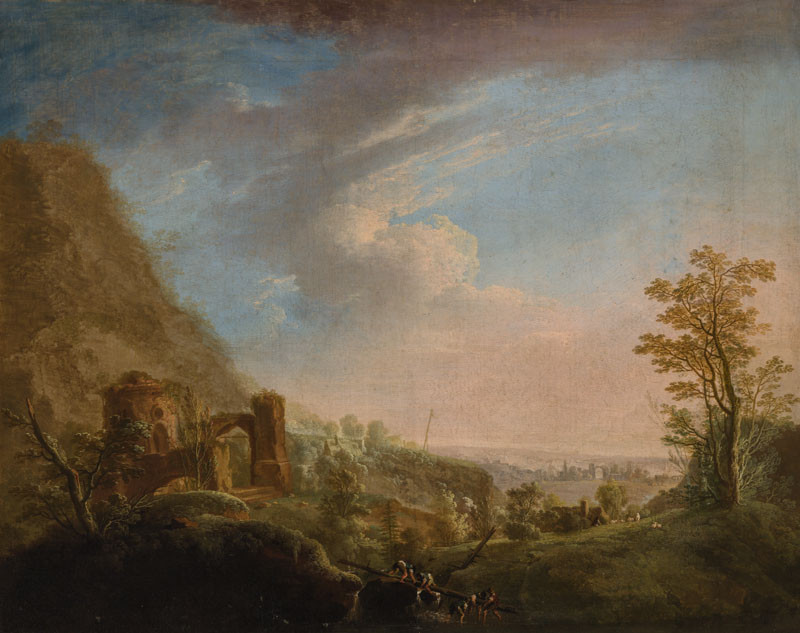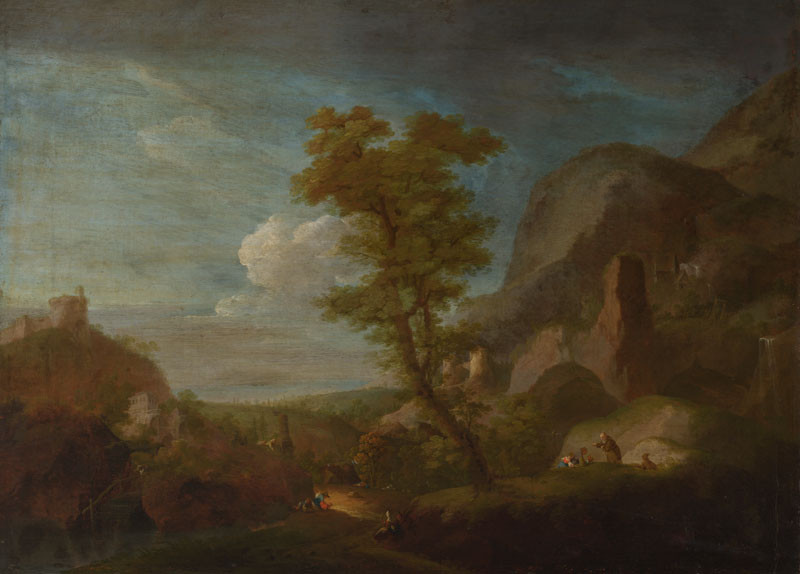
Procházka’s models were chiefly the painters of the Venetian settecento - Marco Ricci, Giuseppe Zais and Francesco Guardi - and their followers in Central Europe, in the first place, Christian Hilfgott Brand and Norbert Grund. German and Austrian landscape painting also played a role, providing more than simple formal advice - only Dutch landscape painting, very fashionable at the time, did not mean much to Procházka, except for some models of architecture and trees. Given the many elements, from which Procházka finally composed his landscapes, their vivid, homogeneous effect is astonishing. The painterly rendering is, in this context, very important, tending from Baroque illusions directly to indications of mood, completely bypassing dry Neo-Classicist drawing. Procházka’s emphasis on colour tallies with his Early Romantic concept of painting. In this panoramatic landscape view with a hamlet and aqueduct, with the ruins of a round church and of two arches, the most striking feature is a low horizon; in the foreground men are building from rough-hewn beams a foot-bridge across a stony stream. The staffage, indicated with such masterful illusive patches of colour that the eye seems to see more than the brush could draw, is reminiscent of the small figures in Claude Vernet’s landscapes.


